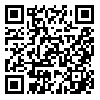1. Chandler LK, Dahlquist CM. Functional assessment: strategies to prevent and remediate challenging behavior in school settings. In: Asadpour S. (Persian translator). Tehran: Monadi Tarbiat Pub; 2006, pp:18–24.
2. Bouziane C, Caan MWA, Tamminga HGH, Schrantee A, Bottelier MA, de Ruiter MB, et al. ADHD and maturation of brain white matter: A DTI study in medication naive children and adults. Neuroimage Clin. 2018;17:53–9. [
DOI]
3. Ruiz-Goikoetxea M, Cortese S, Aznarez-Sanado M, Magallón S, Alvarez Zallo N, Luis EO, et al. Risk of unintentional injuries in children and adolescents with ADHD and the impact of ADHD medications: A systematic review and meta-analysis. Neurosci Biobehav Rev. 2018;84:63–71. [
DOI]
4. Emma McIlveen-Brown. Motor performance in adolescents with ADHD [Thesis for M.A.]. [Toronto, Canada]: University of Toronto; 2010, pp:1–71.
5. Lo HHM, Wong SYS, Wong JYH, Wong SWL, Yeung JWK. The effect of a family-based mindfulness intervention on children with attention deficit and hyperactivity symptoms and their parents: design and rationale for a randomized, controlled clinical trial (Study protocol). BMC Psychiatry. 2016;16(65):1–9. [
DOI]
6. Gholami R, Esteki M, Nosratabadi M. Relationship between IVA measures and QEEG pattern in children with Attention-Deficit/Hyperactivity disorder. Neuropsychology. 2018;3(10):25–38. [Persian] [
Article]
7. Finzi-Dottan R, Triwitz YS, Golubchik P. Predictors of stress-related growth in parents of children with ADHD. Res Dev Disabil. 2011;32(2):510–9. [
DOI]
8. Belali R, Aghayousefi AR. Effects of parental training program on the reduction of behavioral problems of children. Journal of Applied Psychology. 2012;5(4):59–73. [Persian] [
Article]
9. Hemedi Y, Moayedi F, Moayedi AR, Goli G. Prevalence of attention deficit hyperactivity disorder in Bandarabbas primary school students in 2010. Hormozgan Medical Journal. 2013;17(3):12–8. [Persian] [
Article]
10. Schroeder CS, Smith-Boydston, Julianne M. Assessment and treatment of childhood problems: a clinician's guide. Firouzbakht M. (Persian translator). Tehran: Danjeh Pub; 2015, p:565.
11. Chronis AM, Chacko A, Fabiano GA, Wymbs BT, Pelham WE Jr. Enhancements to the behavioral parent training paradigm for families of children with ADHD: review and future directions. Clin Child Fam Psychol Rev. 2004;7(1):1-27. [
DOI]
12. Self-Brown S, Frederick K, Binder S, Whitaker D, Lutzker J, Edwards A, et al. Examining the need for cultural adaptations to an evidence-based parent training program targeting the prevention of child maltreatment. Children and Youth Services Review. 2011;33(7):1166–72. [
DOI]
13. Pasha R. The effectiveness of parents behavior modification on the degree of hyperactive childrens unpleasant behavior. Knowledge & Research in Applied Psychology. 2017;17(1):90–8. [Persian]
14. Salami F, Ashayeri H, Estaki M, Farzad V, Koochak Entezar R. Mother-based combined training and its effect on the symptoms Attention Deficit/ Hyperactivity Disorder (ADHD). Neuropsychology. 2016;2(4):31–44. [Persian] [
Article]
15. Kakavand AR. Ravanshenasi marazi koodak [Child pathological psychology]. Viraysh Pub; 2016. [Persian]
16. Khodabakhshi Koolaee A, Shai A, Navidian A, Mosalanejad L. The effect of positive parenting program training in mothers of children with attention deficit hyperactivity on reducing children's externalizing behavior problems. Journal of Fundamentals of Mental Health. 2015;17(3):135–41. [Persian] [
DOI]
17. Singh NN, Singh AN, Lancioni GE, Singh J, Winton ASW, Adkins AD. Mindfulness training for parents and their children with ADHD increases the children's compliance. J Child Fam Stud. 2010;19(2):157–66. [
DOI]
18. Conners CK. Rating scales for use in drug studies with children. Psychopharmacology Bulletin (Special Issue-Pharmacotherapy with Children). 1973;24:24–9.
19. Sinha P, Singh RP. Guidelines for High School Students' Regulation Questionnaire. Karami A. Persian translator. Tehran: Sina Institute of Mental Processing; 2001. [Persian].
20. Achenbach TM, Rescorla LA. ASEBA school age forms profiles. Burlington: University of Vermont, research center for children, youth & families; 2001.
21. Beck LH, Bransome ED Jr, Mirsky AF, Rosvold HE, Sarason I. A Continuous Performance Test of brain damage. J Consult Psychol. 1956;20(5):343-50. [
DOI]
22. Hadianfard H, Najarian B, Shokrkon H, Mehrabizadeh Honarmand M. Construction and validation of the Farsi version of the continuous performance test. Journal of Psychology. 2001;4(4):388–404. [Persian]
23. Sanford JA, Turner A. Manual for the integrated visual and auditory continuous performance test. Richmond, VA: BrainTrain; 1995.
24. Sadati Firozabadi S, Afroz Gh, Rostami R, Behpajooh A, Shokohi Yakta M, Ghobari Bonab B. The effectiveness of neural feedback therapy on visual and hearing attention in students with attention deficit / hyperactivity disorder, psychological sciences. Journal of Psychologicalscience. 2012;11(42):1–9. [Persian]
25. Foulad Chang M. The role of family patterns in adolescent adjustment. Family Research Quarterly. 2007;2(7):209-21. [Persian] [
Article]
26. Minaee A. Adaptation and standardization of Child Behavior Checklist, Youth Self-report, and Teacher's Report Forms. Journal of Exeptional Children. 2006;6(1):529-58. [
Article]
27. Barkley RA, Fischer M, Edelbrock CS, Smallish L. The adolescent outcome of hyperactive children diagnosed by research criteria: I. An 8-year prospective follow-up study. J Am Acad Child Adolesc Psychiatry. 1990;29(4):546–57. [
DOI]

 ، ژاسنت صلیبی*2
، ژاسنت صلیبی*2 
 ، هومن نامور3
، هومن نامور3 




